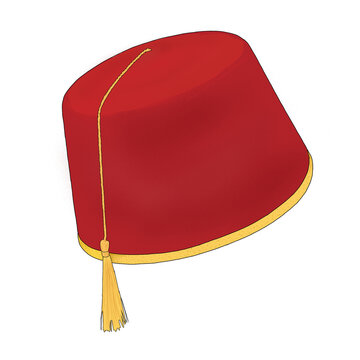Exploring Cultural Hats: Traditional Headwear from Around the World
12th Feb 2024
Hats have been an integral part of human culture for centuries!
They serve as symbols of tradition, identity, and social status across different civilizations. From the ornate turbans of the Middle East to the intricate feathered headdresses of indigenous tribes in the Americas, each cultural hat tells a unique story steeped in history and symbolism. Join us on a journey as we explore traditional headwear from around the world, celebrating the rich diversity of human expression and craftsmanship.

The Sombrero - Mexico:
Traveling across the globe to Mexico, we encounter the vibrant and iconic Sombrero. Characterized by its wide brim and conical shape, the Sombrero has become synonymous with Mexican culture and folklore. Originally designed to provide shade from the intense sun, the Sombrero evolved into a symbol of national pride and identity. Its colorful embellishments and intricate designs often reflect the diverse regional traditions and heritage of Mexico's indigenous communities.

Let's start our cultural exploration with the iconic Fez, also known as Tarboosh, originating from Morocco. This distinctive hat features a flat-topped cylindrical shape with a tassel on top. The Fez holds deep significance in Moroccan culture, symbolizing dignity, tradition, and religious identity. It was commonly worn by men as part of formal attire and religious ceremonies, reflecting the country's rich heritage and Islamic influences.
Venturing into the Caucasus region, we encounter the Papakha, a traditional sheepskin hat worn by men in countries like Georgia, Armenia, and Azerbaijan. The Papakha serves both practical and cultural purposes, providing warmth and protection against harsh winters while symbolizing courage, masculinity, and national pride. Its distinctive design and symbolism have made it an enduring symbol of Caucasian identity and tradition.

In West Africa, the Kufi emerges as a symbol of spiritual devotion and cultural identity. This close-fitting cap is traditionally worn by men as a sign of reverence and humility, especially during religious ceremonies and important milestones. Made from various materials such as cotton, wool, or silk, the Kufi reflects the diverse cultural tapestry of West African societies, where craftsmanship and tradition intertwine.
In the Middle East, the Taqiyah, also known as Kufi, holds a revered place in Islamic culture and tradition. This simple, close-fitting cap is worn by men as a symbol of humility and religious observance, especially during prayers and religious gatherings. The Taqiyah's modest design reflects the values of piety and modesty upheld in Islamic teachings, underscoring the spiritual significance of head coverings in Muslim societies.
From the sun-soaked deserts of Mexico to the bustling markets of Morocco, traditional hats serve as enduring symbols of culture, identity, and heritage across the globe. Each hat tells a story of shared history, symbolism, and craftsmanship- reflecting the diverse tapestry of human experience.





